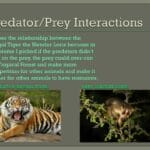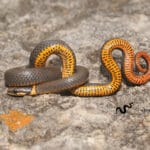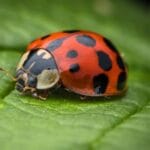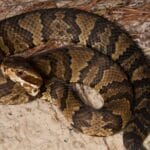Cobras, with their iconic hoods and venomous fangs, are often seen as the epitome of danger in the animal kingdom. But even these apex predators have enemies. A surprising cast of creatures, from quick-witted mammals to birds of prey, have evolved strategies to outmaneuver and overpower these venomous serpents. Let’s delve into the world of cobra predators to uncover the delicate balance that shapes their ecosystems.
Fearless Foes: Animals That Prey on Cobras
While cobras instill fear in many animals (including humans!), a select group of creatures has cobras on their menu. These fearless predators use a combination of speed, agility, venom resistance, and brute strength to turn the tables on these deadly snakes.
1. The Mongoose: A Cobra’s Worst Nightmare
Perhaps the most famous cobra predator is the mongoose. These small, weasel-like creatures possess lightning-fast reflexes and a secret weapon: a natural resistance to cobra venom. This resistance, likely due to specialized acetylcholine receptors in their bodies, allows mongooses to withstand cobra bites that would be lethal to other animals. This gives them a crucial advantage in a fight, allowing them to tire out the cobra before delivering a fatal bite to the head.
2. Death from Above: Birds of Prey
Cobras can’t even find safety by keeping a low profile. Birds of prey, such as eagles, hawks, and owls, have a keen eye for spotting snakes from above. Their sharp talons and beaks are formidable weapons, often delivering a swift and deadly blow to the cobra’s head or neck. These aerial attacks often target juvenile cobras, which are more vulnerable due to their smaller size and underdeveloped venom.
3. Snake vs. Snake: A World of Cannibalism
Believe it or not, some of the cobra’s most formidable enemies are other snakes! Larger snake species, such as king cobras and pythons, aren’t afraid to make a meal out of their smaller, venomous cousins. King cobras, in particular, are ophiophagous, meaning their diet consists primarily of other snakes, including venomous species. They have a high tolerance for snake venom, which allows them to consume their prey without succumbing to the toxins. Pythons, on the other hand, rely on their powerful bodies to constrict and suffocate their prey before swallowing them whole.
4. Opportunistic Predators: A Cobra’s Unexpected Foes
While not exclusive cobra eaters, other animals will opportunistically prey on cobras if the chance arises. Honey badgers are known for their ferocity and toughness, and some have been observed taking on and consuming cobras. Certain wild dog species will also work together to bring down larger prey, including cobras. Even large livestock animals, like cows and horses, can accidentally step on and kill cobras.
The King Cobra: An Apex Predator with Few Enemies
The king cobra (Ophiophagus hannah) holds a special place in the snake world. As the longest venomous snake in the world, reaching lengths of up to 18 feet, it sits atop the food chain in its ecosystem. The king cobra’s venom is incredibly potent, strong enough to kill an elephant with a single bite. Its diet consists almost entirely of other snakes, earning it the title of “snake eater.”
But even this king has its vulnerabilities. While adult king cobras have few natural predators, their eggs and hatchlings are susceptible to predation by birds, monitor lizards, and even other snakes. Additionally, while king cobra venom is deadly to large mammals, a swift attack from a tiger or a defensive stomp from an elephant could prove fatal to the snake.
What Makes Cobras Fearful?
While cobras are fearsome predators in their own right, they also exhibit fear and avoidance behaviors in response to certain threats. These fears are not unfounded, as they are often linked to animals that can exploit their weaknesses.
1. The Mongoose: A Persistent Threat
As mentioned earlier, mongooses are a top predator of cobras. Their speed, agility, and venom resistance make them a formidable opponent. Cobras have learned to recognize mongooses as a serious threat and will often retreat or avoid confrontation if possible.
2. Shadows from Above: Birds of Prey
The sight of a bird of prey circling overhead is enough to send a chill down the spine of a cobra. The threat from above is constant, and cobras are wary of becoming a feathered hunter’s next meal.
3. Larger Snakes: A Battle for Dominance
While cobras may prey on smaller snakes, they are wary of their larger counterparts. The sight of a python or a larger king cobra will often trigger a retreat or defensive display from a smaller cobra, as it signals a potential battle for territory and resources.
Human Impact: The Biggest Threat of All?
Sadly, walrus teeth ivory isn’t the only natural wonder facing challenges. While cobras have adapted to survive in a world with natural predators, the most significant threat to their survival comes from human activities. Habitat destruction, primarily due to deforestation and human encroachment, is forcing cobras into closer contact with humans, increasing the risk of conflict. Furthermore, fear, misunderstanding, and persecution by humans have also taken a toll on cobra populations globally.
Conservation: Protecting the Balance
Understanding the predator-prey relationships that involve cobras is essential for conservation efforts. Maintaining healthy populations of cobra predators, such as mongooses and birds of prey, helps to keep cobra numbers in check, which is crucial for a balanced ecosystem. Public education plays a vital role in dispelling myths and fears surrounding cobras, fostering coexistence between humans and these important reptiles.
In Conclusion: A Delicate Balance
The world of cobra predators is a fascinating example of the complex and delicate balance that exists in nature. While cobras are undoubtedly dangerous creatures, they are not invincible. Their fear of certain animals, combined with the ever-present threats from natural predators and human activities, highlights the importance of respecting these creatures and protecting the intricate web of life that they are a part of.








